This article explains how to create passkeys on mobile devices using WhatsApp. You can use your fingerprint, face, or screen lock to verify your identity.
WhatsApp is a popular cross-platform messaging app that allows users to send text and voice messages, make voice and video calls, share files, and more.
One can configure many settings with the WhatsApp app in Windows, including starting the WhatsApp app at login, turning read receipts on or off, turning notifications on or off, turning automatic downloads on or off, clearing and deleting chats, and more.
On mobile devices, you can turn the fingerprint lock feature on or off, turn disappearing messages on or off, turn last seen and online status on or off, silence unknown callers, add or remove people from blocked contacts, change who can add you to groups, turn conversation tones on or off, turn Send is enter on or off, turn ringtone on or off, turn high priority notifications on or off, change who can see your updates, turn reaction notifications on or off, turn use less data for calls on or off, turn two-step verification on or off, turn security notifications on or off, turn protected IP address on or off, enable or disable WhatsApp chat backup, and more, which are unavailable on the desktop.
The WhatsApp mobile version now allows you to create a passkey that can safely be stored in a password manager. Samsung, Chrome, and Edge password managers are currently supported.
A passkey is an added layer of security that can prevent unauthorized access to your WhatsApp account. It is a unique code that you can create to ensure that only you can access your WhatsApp messages and data. Using a passkey can prevent others from accessing your WhatsApp account, even if they have access to your phone.
Passkeys can be created using your fingerprint, face, or screen lock, providing added convenience and security. Using a passkey ensures that your WhatsApp messages and data are safe and secure, even if your phone falls into the wrong hands.
Create a passkey in WhatsApp
As mentioned above, users can now create a passkey in WhatsApp to prevent unauthorized access to their data.
Here’s how to do it.
First, open and launch the WhatsApp app on your mobile device.

When the app opens, click the Settings and More button (vertical dots) at the top right corner.
Then, click Settings on the context menu.

On the Settings screen, select Account to expand it.
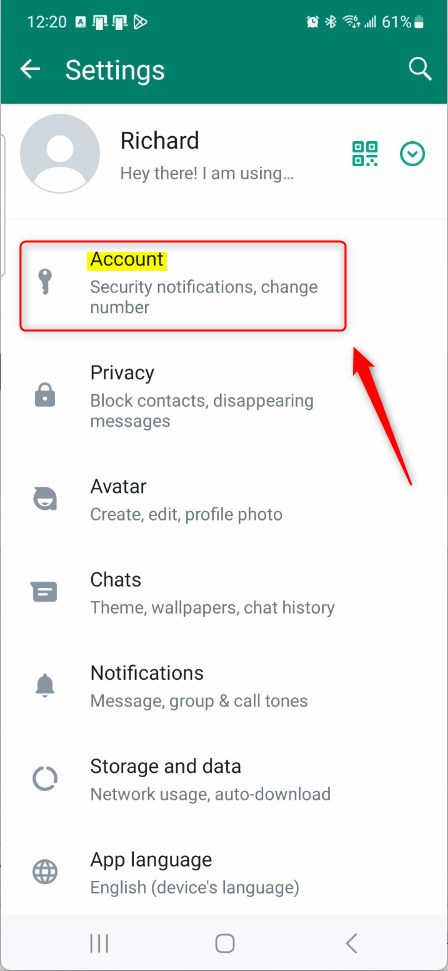
Next, select the “Passkeys” tile on the Account settings page to open it.
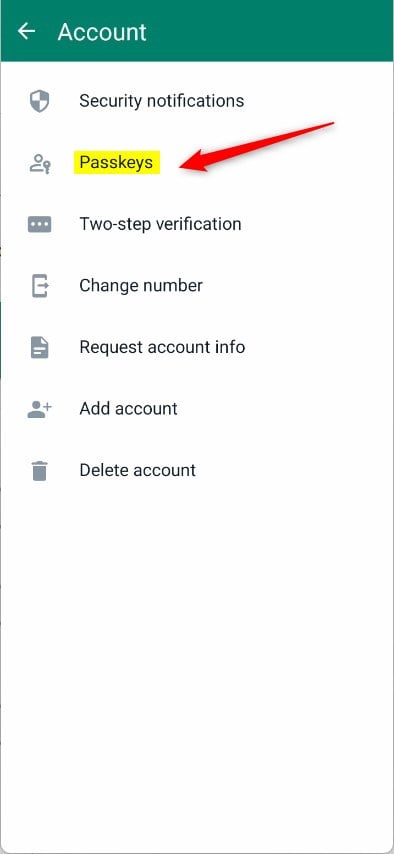
Then, select the ‘Create a password’ button on the ‘Passkeys‘ settings page to open its settings.

Next, click ‘Continue‘ to start creating your passkey in WhatsApp.
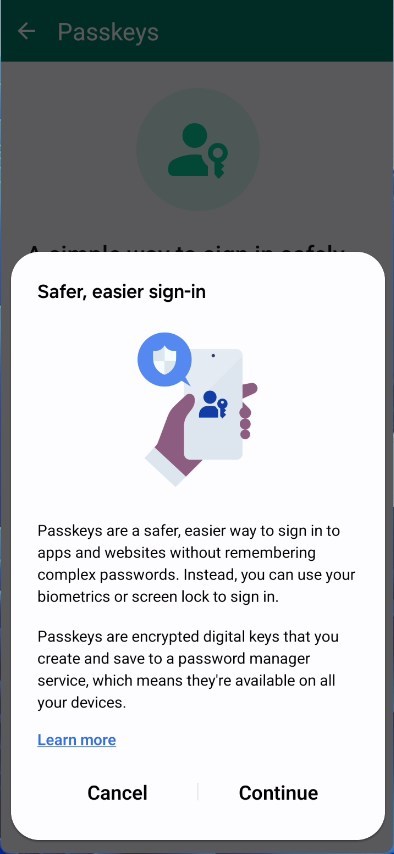
Then, select Samsung password manager to store your passkey. If Samsung isn’t your default password manager, select ‘Save another way.’
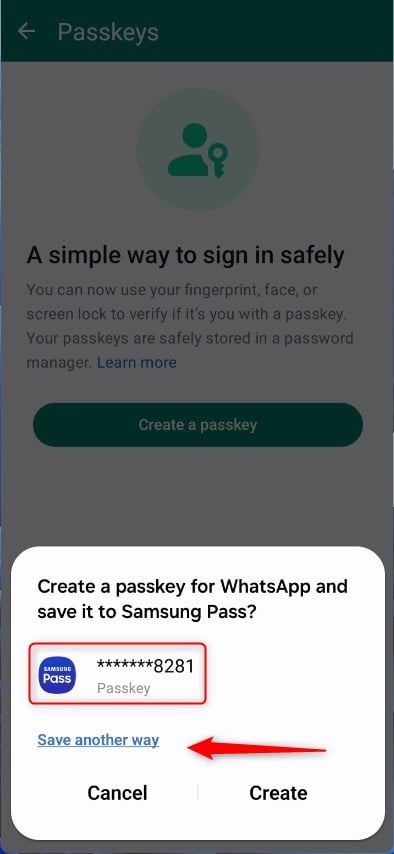
Next, select Google Password Manager if it’s your default.
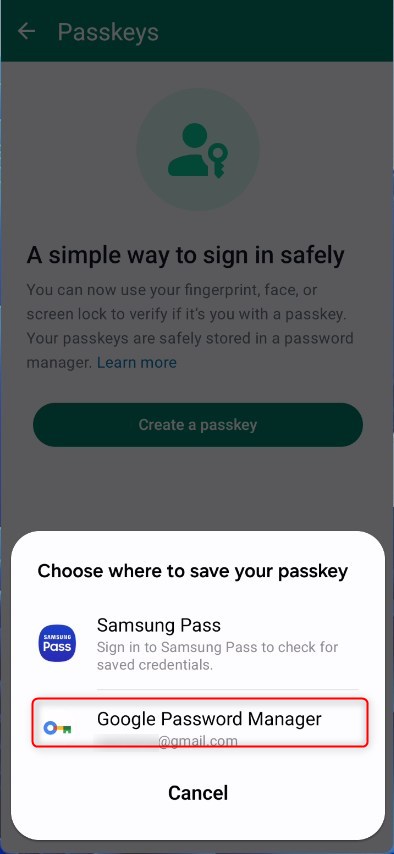
Then click ‘Create‘ to create and store your passkey.
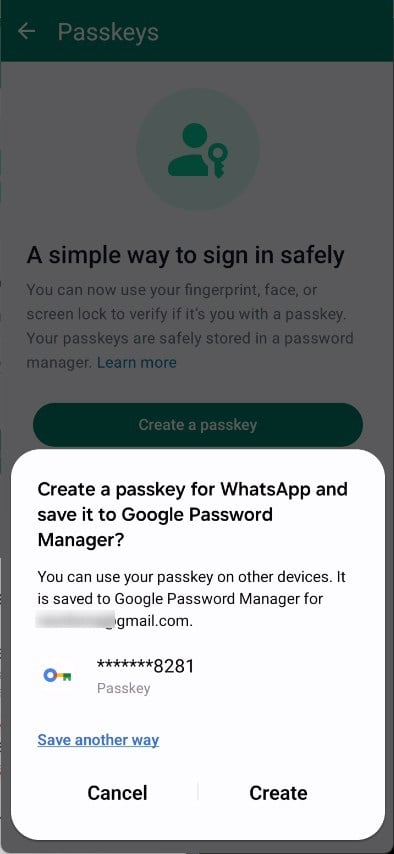
After clicking ‘Create,’ you will be prompted to select a method to verify your identity. If you have a lock screen, the default option will be to use your lock screen to verify it’s you.
You can also use your fingerprint and face to authenticate.
Once you’re done, a passkey will be created and ready for use to verify your account.
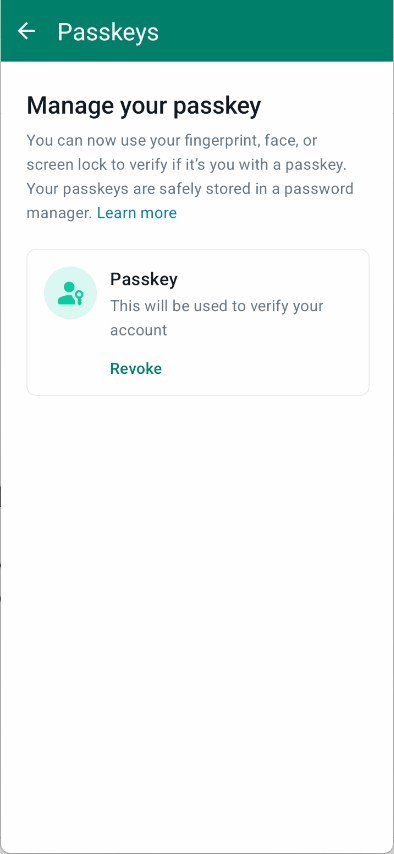
That should do it!
Conclusion:
- Creating a passkey in WhatsApp adds an extra layer of security to your account, preventing unauthorized access to your messages and data.
- You can create a passkey using your fingerprint, face, or screen lock, offering convenience and security.
- Storing the passkey in supported password managers such as Samsung, Chrome, or Edge further enhances its accessibility and protection.
- Following the simple steps outlined in this article, you can easily set up a passkey for your WhatsApp account, ensuring your information remains safe and secure.

Leave a Reply